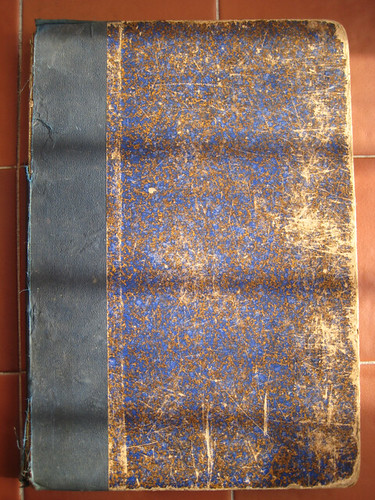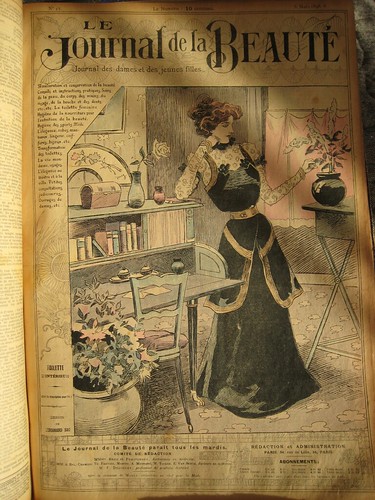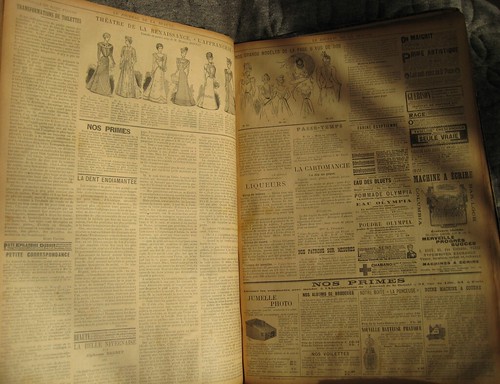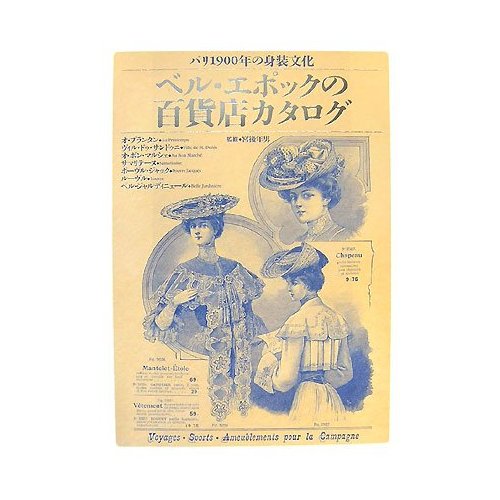Hello there! See, I haven’t forgotten this blog, my tiny crafty place of the Internet. I’m really sorry I haven’t been around for all those months. It’s not that I didn’t have anything creative to talk about, far from it. But time seemed to disappear so fast I didn’t have any left…
I feel it’s not that easy to come back after being away for such a long time. Of course, you can’t help but wonder if there will be anyone to read those words at the other end of the ethernet cable of Wi-Fi waves. Because sharing supposes a recipient. You’re unsure of what to say or how to say it. Should I explain? Should I start as if nothing happened with my latest project? I’ve decided in favor of going back smoothly, with something that would relate to what I talked about last summer. You might remember this beautiful gem I found at a backyard sale, the collection of a 1898 fashion & beauty magazine. It’s a real pleasure to browse and read and I’d like to share an excerpt with you tonight. Of course the magazine being in French, unless you can read this language you won’t be able to appreciate the original text. You will find an English translation after the scans, that I hope will be understandable. The language is probably a bit too modern, I lack knowledge in English from the end of the 19th century, but I hope it will still be enjoyable. A little glimpse of what they though was proper conduct then, and a clue as to what as occupied me those past months and kept me away from here.To the english translationOriginal text :

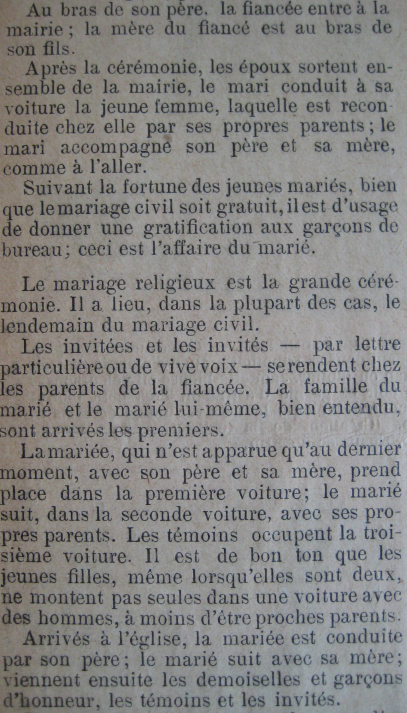
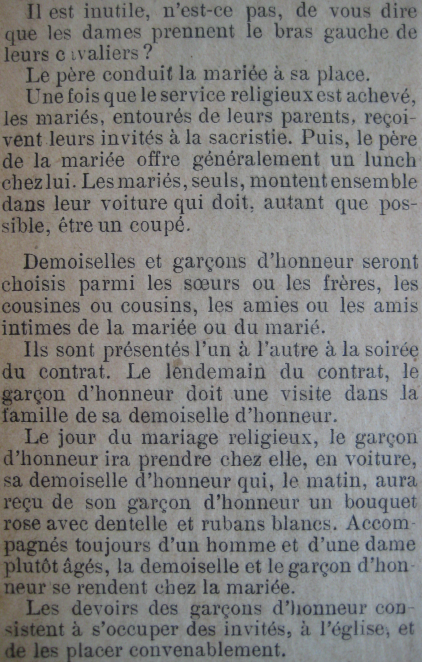
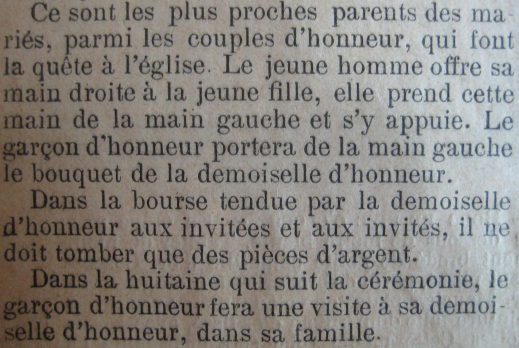
Parisian life
Usage
Civil and religious weddings
Without a doubt, everybody is supposed to know, and everyone think they know what is to be done, what we should do when we get married, when we give our son or daughter in marriage, or when we’re simply invited to a wedding. However, how many mistakes are done by those exact persons who think they’re extremely knowledgeable in the worldly usage! It occurred to us that it would be useful and pleasant for our readers to remind them what they, their husbands and their sons must do, because it is usually women who are the guides and advisors in wedding ceremonies.
The civil wedding usually happens the day before the religious wedding. The fiancé go pick his bride at her parents’ home. She gets in the car with her parents, where she has the place of honor. The fiancé follows in a second car with his family. The bride and groom’s four witnesses then take a seat in cars supplied by the bride’s father. Besides, all of a wedding’s expenses are at the charge of the bride’s father. The bride enters the city hall with her father; the groom’s mother enters with him.
After the ceremony, the newlyweds exit together from the city hall and the husband brings the young woman to her car, where her parents are waiting to take her home. The husband goes with his father and mother, as he did on their way in.
Depending on the young couple’s wealth, even if the civil marriage is free, it is customary to give something to the city hall lads; this is the groom’s responsibility.
The religious wedding is the biggest ceremony. It occurs, most of the time, the day after the civil wedding. The guests, either through a letter or through vocal invitation, go to the bride’s parents place. Of course, the groom and his family arrived there first. The bride, who appeared at the last moment with her father and mother, goes into the first car. The groom follows in the second car with his own parents. The witnesses are in the third car. Young girls, even when there are two of them, shouldn’t go alone in the same car as men, except when they’re close family.
In the church, the bride goes with her father; the groom follows with his mother; then come the bridesmaids and best men, the witnesses and the guests. It isn’t necessary, of course, to remind you that ladies take the left arm of their partner. The father of the bride leads her to her place.
After the ceremony is over, the couple, together with their parents, receives their guests in the sacristy. Then the bride’s father usually offers a brunch at his house. The couple gets alone in their car, which should be, if possible, a coupé.
Bridesmaids and best men are chosen among brothers and sisters, cousins and intimate friends of the bride or groom. They are introduced to one another during the contract evening. The day after, the best man is to pay a visit to his bridesmaid family. The day of the religious wedding, the best man will go take his bridesmaid at her house, with a car. The same morning she would have received from him a pink bouquet with lace and white ribbons. In the company of an older man and lady, they will go to the bride’s place. The best men’s duty is to take care of the guests at the church and seat them properly.
The closest relatives of the bride among the bridesmaids and best men take care of the charity. The young man offers his right hand to the young lady, she takes it with her left hand and rests on it. The best man will carry her bouquet in his left hand. In the purse presented to the guest by the bridesmaid, only silver coins should fall.
During the week following the ceremony, the best man will pay a visit to his bridesmaid, in her family.


